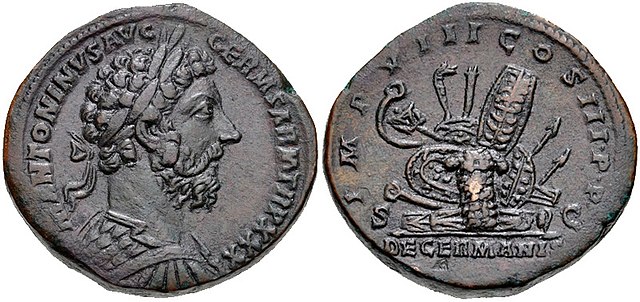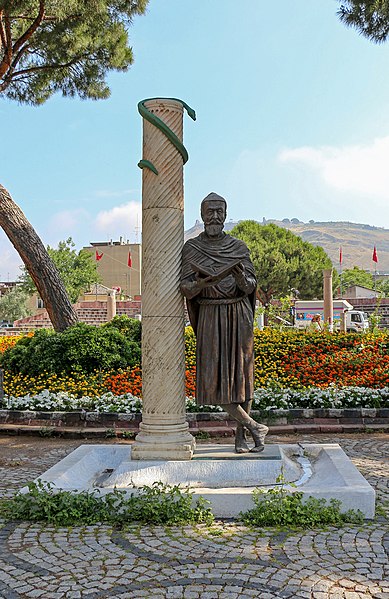The Antonine Plague of AD 165 to 180, also known as the Plague of Galen, was a prolonged and destructive epidemic, which impacted the Roman Empire. It was possibly contracted and spread by soldiers who were returning from campaign in the Near East. Scholars generally believe the plague was smallpox, although measles has also been suggested, and recent genetic evidence strongly suggests that the most severe form of smallpox only arose in Europe much later. In AD 169 the plague may have claimed the life of the Roman emperor Lucius Verus, who was co-regnant with Marcus Aurelius. These two emperors had risen to the throne by virtue of being adopted by the previous emperor, Antoninus Pius, and as a result, their family name, Antoninus, has become associated with the pandemic.
The angel of death striking a door during the plague of Rome: an engraving by Levasseur after Jules-Elie Delaunay
A group of physicians in an image from the Vienna Dioscurides, named after the physician Galen shown at the top centre.
A Roman coin commemorating the victories of Marcus Aurelius in the Marcomannic Wars against the Germanic tribes along the Danube frontier in the early 170s AD
Aelius Galenus or Claudius Galenus, often anglicized as Galen or Galen of Pergamon, was a Roman and Greek physician, surgeon, and philosopher. Considered to be one of the most accomplished of all medical researchers of antiquity, Galen influenced the development of various scientific disciplines, including anatomy, physiology, pathology, pharmacology, and neurology, as well as philosophy and logic.
An 18th-century engraving by Georg P. Busch
An interpretation of Galen's human "physiological system"
Modern statue of Galen in his home town, Pergamon
A group of physicians in an image from the Vienna Dioscurides; Galen is depicted top center.






